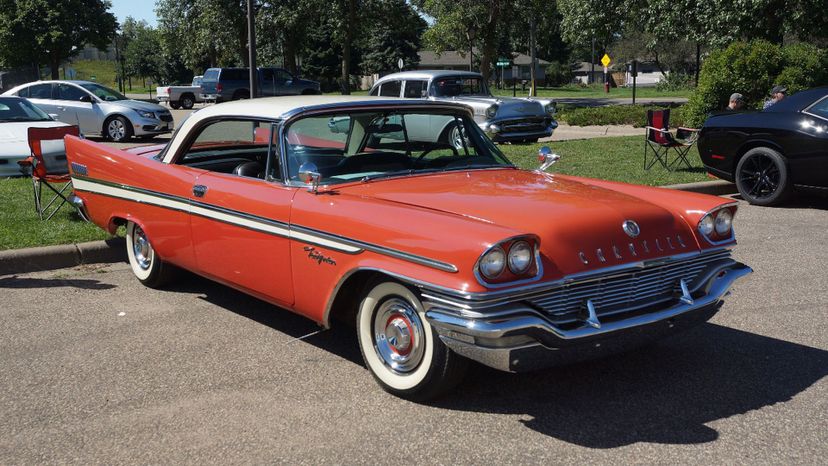
About This Quiz
Can you tell your Cadillacs from your Studebakers? Know the official name of the iconic Volkswagen Beetle, or which car makers were the first to introduce air conditioning, power steering or seat belts as standard features? Take our quiz to see how much you know about these classic cars from the fabulous '50s!
The post-WWII era represented a boom period for America as other countries struggled to rebuild. The '50s were a peak period in American industry, particularly among car manufacturers. In fact, roughly one out of every six working Americans were employed in the automotive field by the start of 1960.Â
This golden period saw the Big Three continuing to expand, while independent companies like Hudson, Packard and Muntz rose and fell. The '50s also represented a time of staggering innovation in automotive technology, from seat belts and air conditioning to power brakes and steering to the fine tuning of the powerful V8 engine. A booming economy meant plenty of potential car buyers with enough disposable income to ignore fuel efficiency in favor of some of the largest cars ever built.Â
Think you know all there is to know about the greatest cars of the '50s? Take our quiz to find out!

Chrysler stood out from the pack in the '50s when they became the first auto maker in over a decade to offer air conditioning with the '53 Imperial. By 1960, car buyers had caught on to the brilliance of auto air conditioning, and the feature could be found in around 1 in 5 new cars.
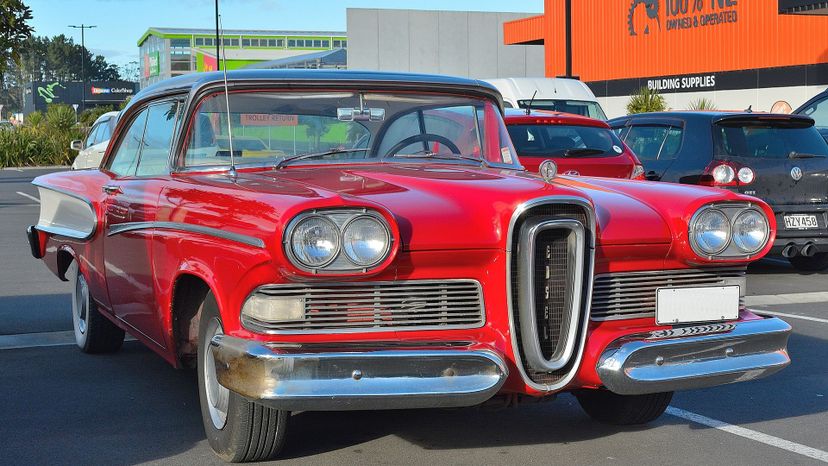
The much-touted Ford Edsel line came out in 1958, and was such a flop that it was discontinued within two short years. Named for one of Henry Ford's sons, the line lost the company around $350 million -- more than $2 billion in today's dollars.
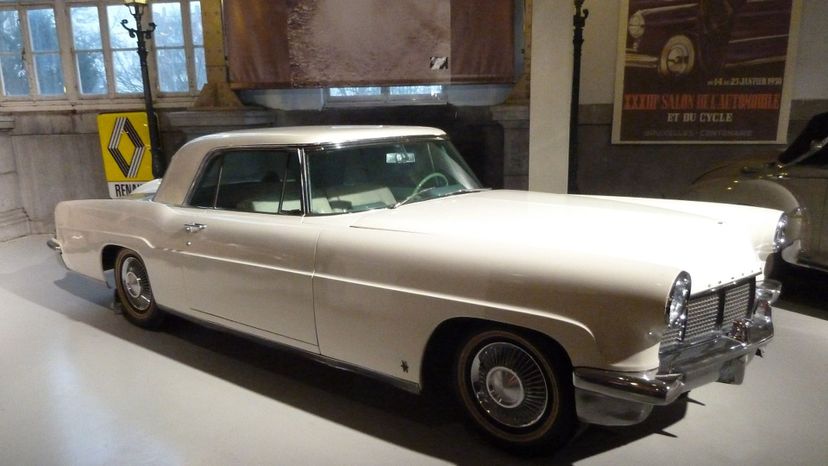
Produced between 1956 and 1956, the Mark II was a high end Lincoln Continental priced at almost $10,000 -- that's like buying a $100,000 car today! Needless to say, few buyers had the cash to afford such a car, and the company only made around 3,000 Mark II units in total.
Advertisement
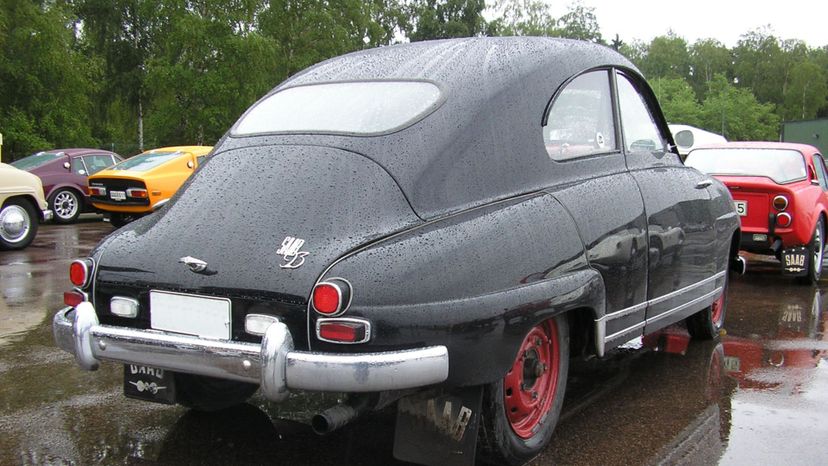
Introduced at the 1958 New York Motor Show, the Saab GT750 was the first mass-produced car to come with seatbelts as a standard option. It also featured twin carburetors capable of generating 50 hp -- plus a cool wooden steering wheel.
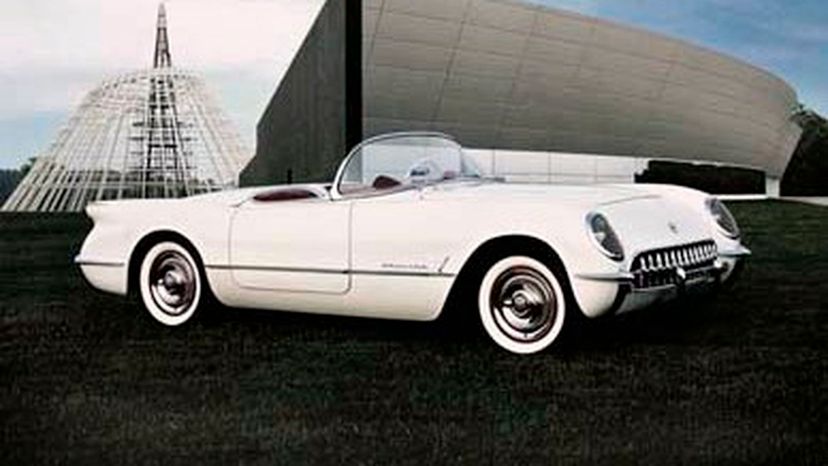
The iconic Chevy Corvette came out in 1953. Early versions of this two-door convertible -- which took its name from a small warship -- were available in blue, red, black or white.

The Ford Thunderbird personal luxury vehicle was a sporty two-seater when it came out in 1957. The company took a gamble in 1958 by adding a back seat, and the change paid off with more than 200,000 units sold over the next three years.
Advertisement
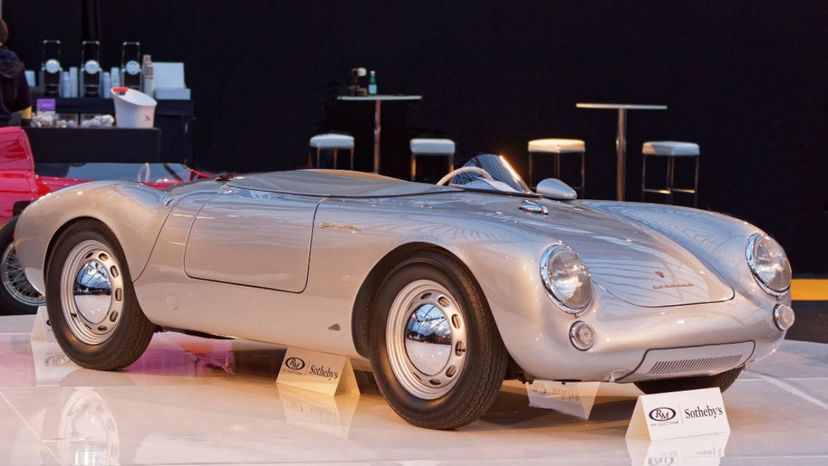
Fifties film star James Dean was driving his Porsche Spyder -- nicknamed Little Bastard -- when he crashed the vehicle on the way to an auto race in 1955 and lost his life. He was just 24 years old and a promising movie star at the time of the crash.
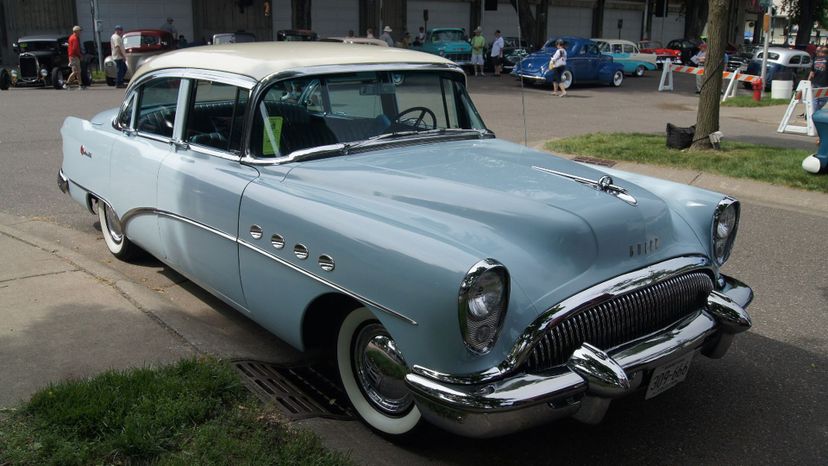
The 1954 Roadmaster came with standard power steering and power brakes, as well as some fancy bumpers known for their conical embellishments. They were referred to as Dagmar bumpers, after a busty female TV star of the time.
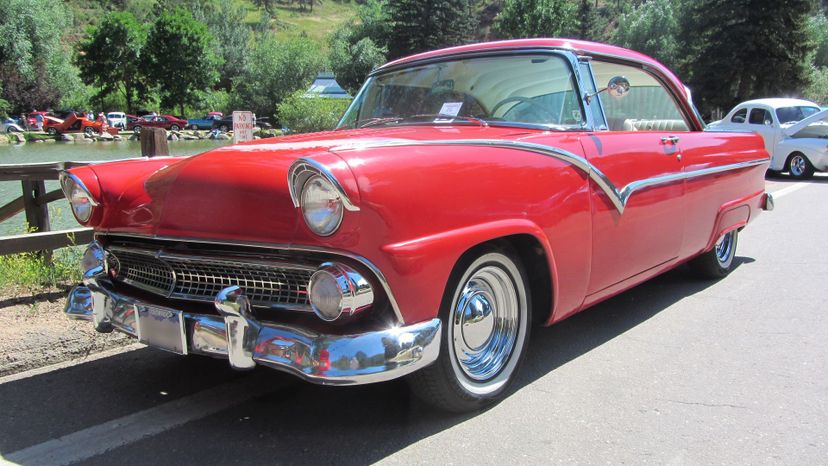
The '50s Ford Fairlane was a full-sized vehicle famous for its shiny chrome accents. Named for Ford's Fair Lane estate in Dearborn, Michigan, the car had a characteristic Fairline Stripe that gave it a stylish two-tone finish.
Advertisement
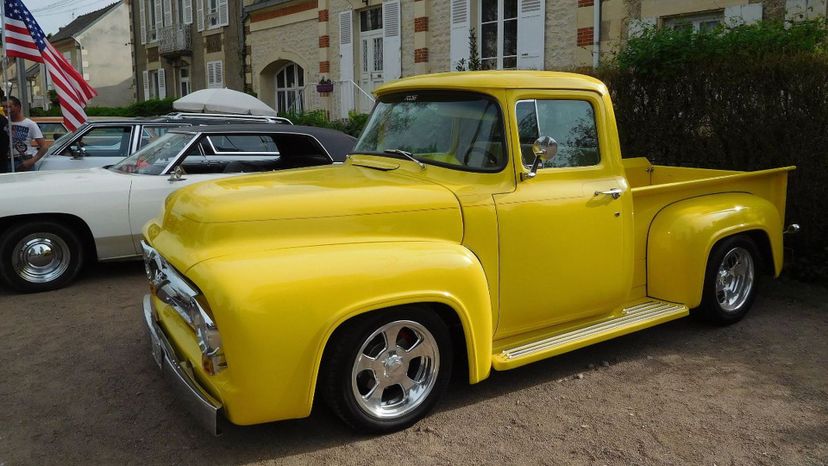
It was 1953, with the second generation of the F-series pickup, when Ford began using a series of numbers to reveal the tonnage of each truck. For example, the F-100 name was used on half-ton trucks, F-250 on 3/4 ton, and F-350 on one ton trucks. The year 1953 was also the first time the trucks came with an option for Ford-O-Matic auto transmission.
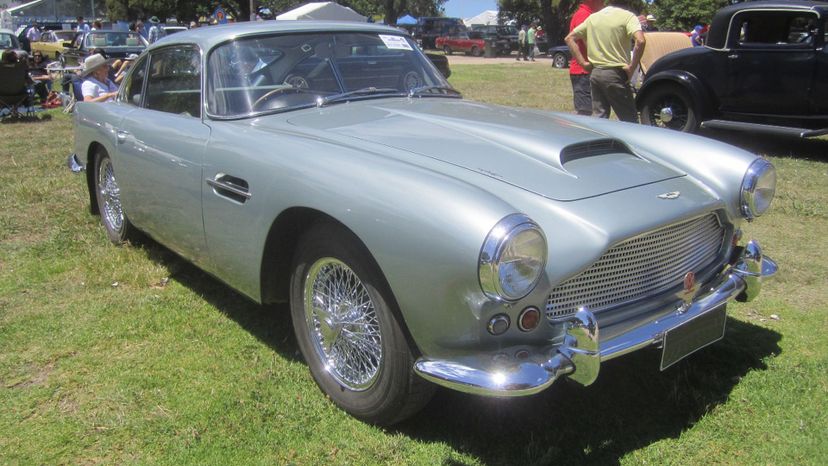
Aston Martin produced the sporty and stylish DB4 grand tourer in the late '50s. The model name was inspired by Sir David Brown, who owned Aston Martin from 1947 through the early '70s. James Bond famously drove a version of this classic car in the 1964 flick "Goldfinger."
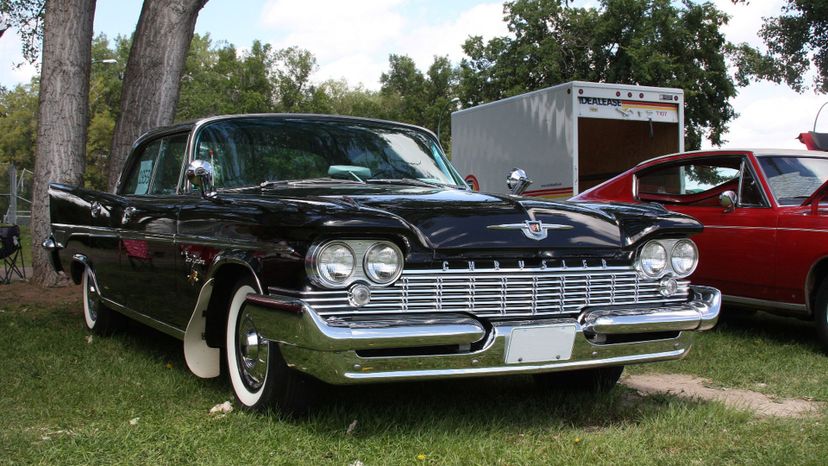
The 1951 Chrylser New Yorker was the first production car with a Hemi option -- known as the FirePower -- which allowed the car to travel from 0 to 60 in 10 seconds. By the middle of the decade, the car was available with even more power in the form of the FirePower V8.
Advertisement
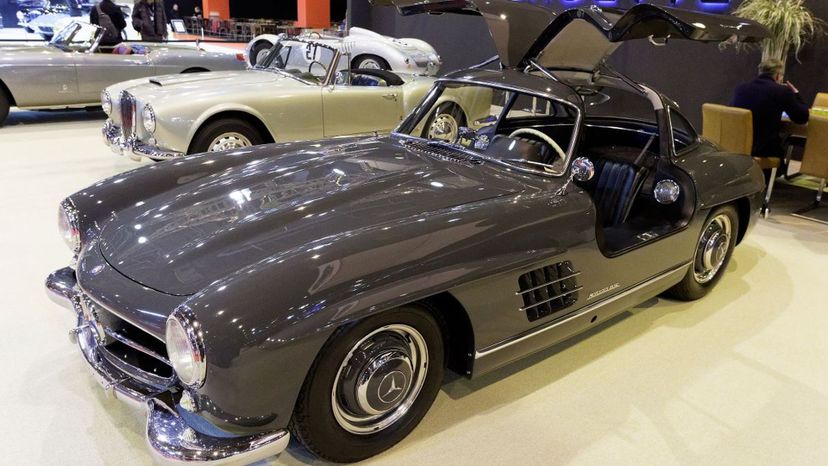
The Mercedes-Benz 300 SL was one of the most stylish cars of the '50s. Used on race tracks in the early '50s, the car with its gull-wing doors was available for everyday driving starting in 1954. An early fuel injection system also made it one of the faster production cars of the period.
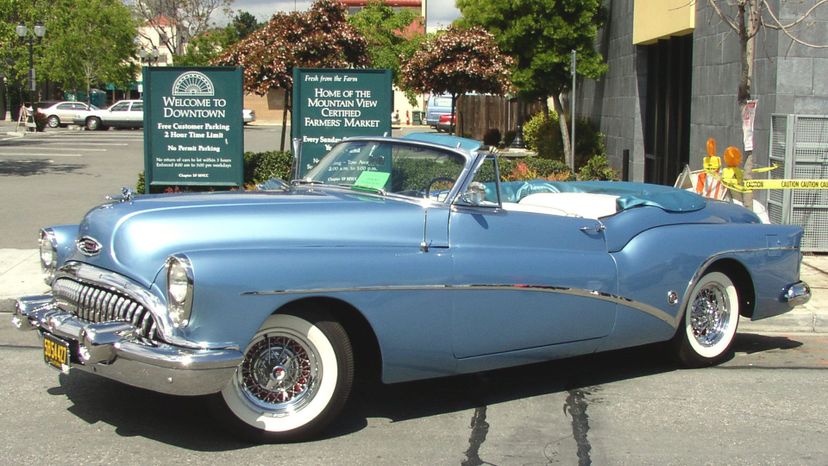
Buick built several specialty cars to celebrate the company's 50th anniversary in 1953. One of these was the Skylark -- a two-door convertible version of the Buick Roadmaster. Only around 2,000 units were made, and they sold for the huge price of $5,000 -- or nearly $50k today.
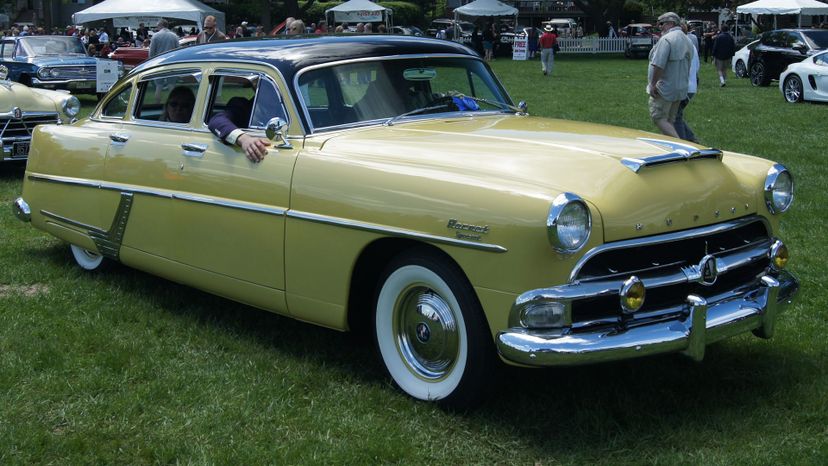
Sold under the Hudson brand from 1951 to 1954, then under the AMC badge between 1955 and 1957, the Hornet was a full-size '50s muscle car. Built low to the ground for speed and style, the model was immortalized in the "Cars" franchise by the character Doc Hudson.
Advertisement
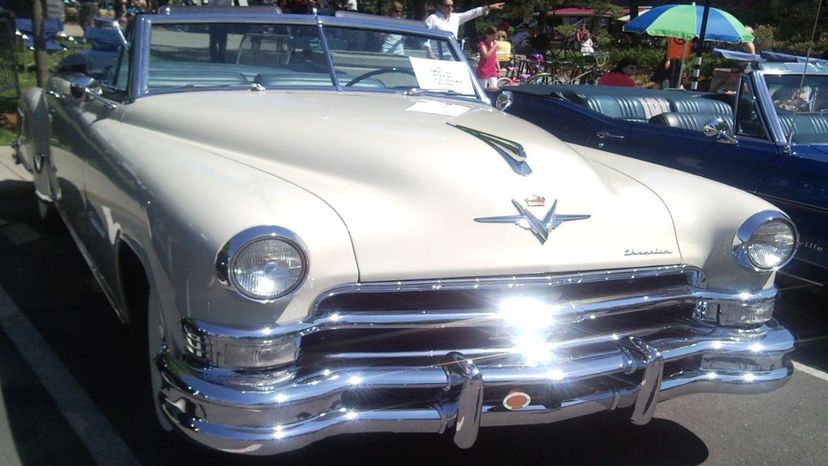
The 1951 Chrysler Imperial was one of the first production vehicles to offer the option of power steering. For just over $200, buyers could opt for the Hydraguide option to make steering a breeze.
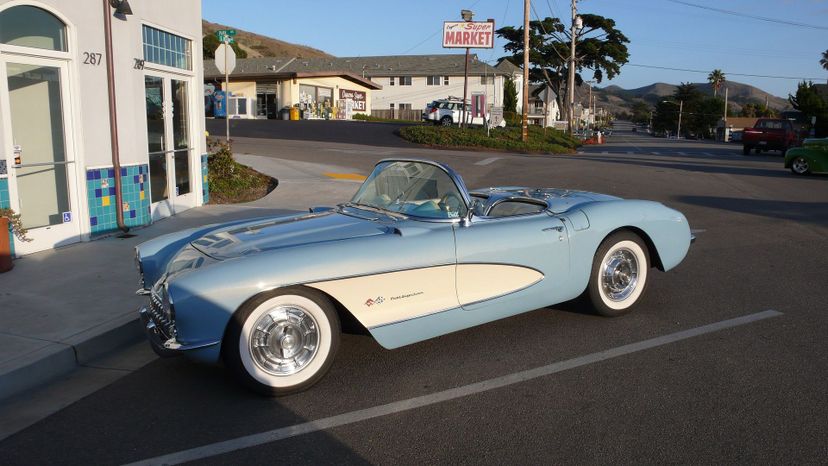
The 1957 Corvette was the first "Vette with a fuel injection engine option. This feature, which was first available in the mid-'50s on some Mercedes models, gave the Corvette the power to generate 250 hp or more.
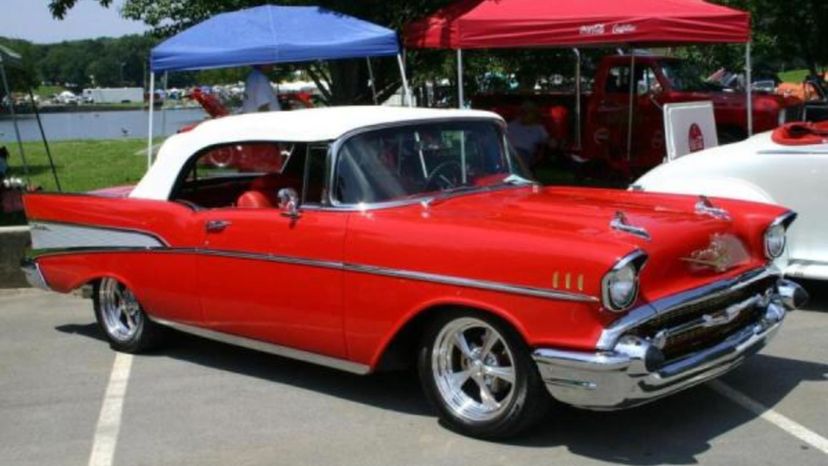
Chevy marketed the second generation Bel Air with the nickname "Hot One" upon its 1955 release. The sporty full-size ride offered a Ferrari-inspired grille, a V8 option and optional automatic transmission.
Advertisement
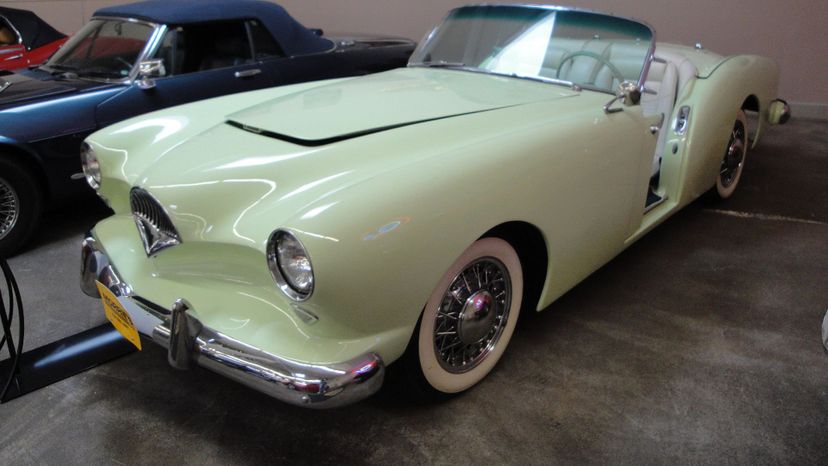
Produced by Kaiser Motors in 1954, the Darrin was the first American car built using fiberglass panels. The doors on this two-door roadster were also unique in that they slid into the fender walls when opened, rather than swinging out like traditional car doors.
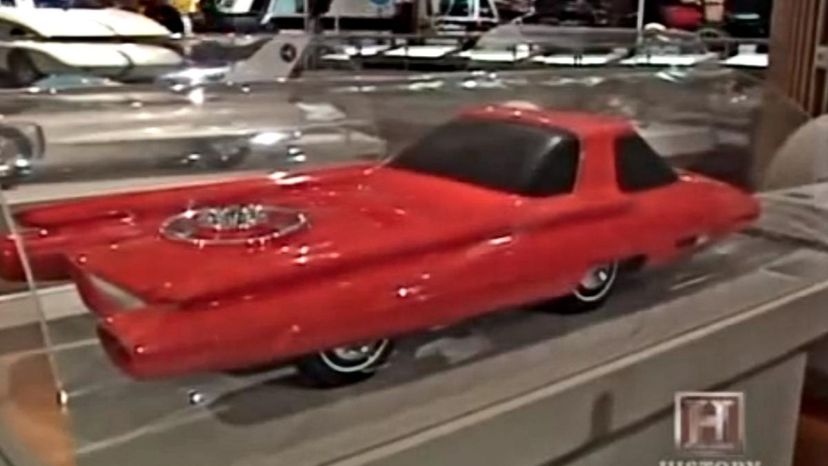
Believe it or not,. Ford created a concept car in 1958 named the Nucleon. It was designed to use an on-board nuclear reactor to power a steam engine. A model of this futuristic car can be seen at Michigan's Henry Ford Museum today.
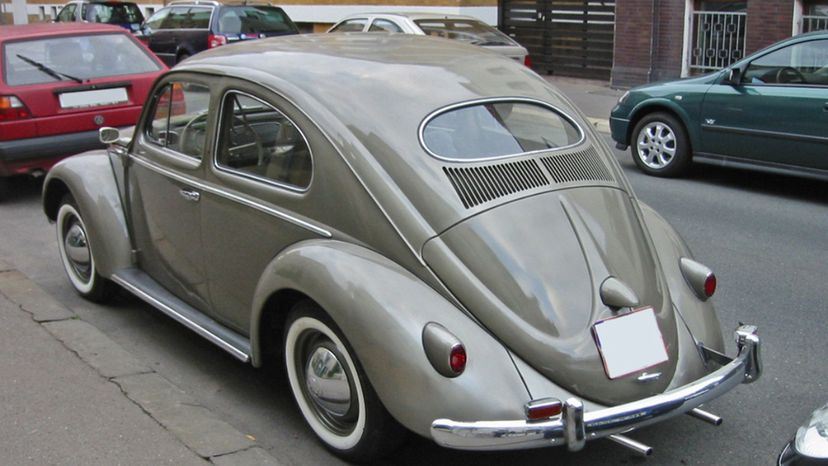
Volkswagen started making its iconic Type 1 car, known as the Beetle, way back in 1938. Production continued throughout the '50s, with the rear window going from a split-screen to a single oval, and then a single rectangle by 1958. The decade also brought a new instrument panel and a pair of twin chrome exhaust pipes.
Advertisement
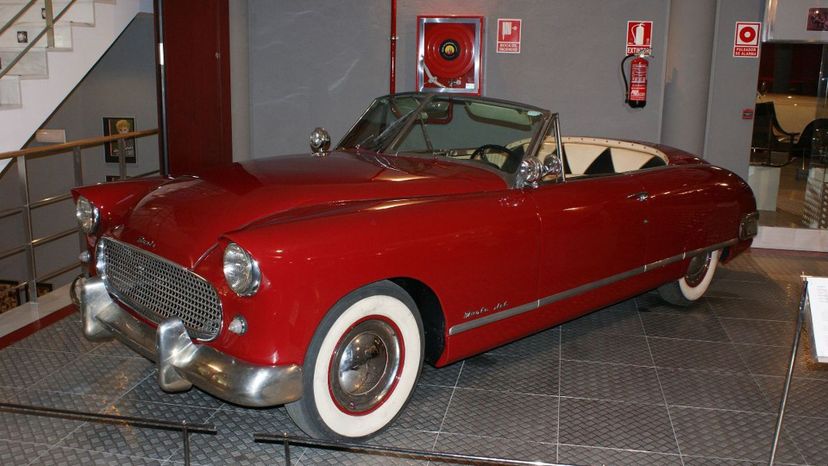
Muntz built just around 200 Jets between 1949 and 1954. The two-door personal luxury car was priced at $5,500 -- that's $50,000 today -- but each one cost more than $6,000 to make, so the company didn't last very long.
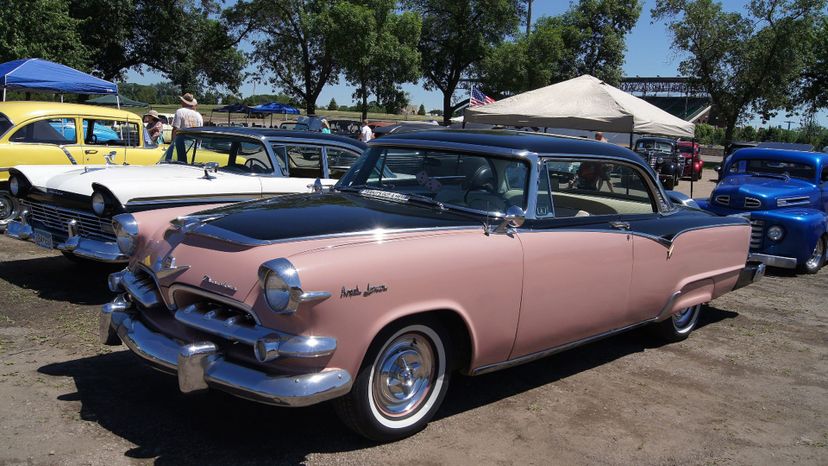
In 1955, Dodge offered customers the chance to purchase hardtop versions of its various full-size models. The company's Coronet, Royal and Custom Royal were given the Lancer upgrade through 1959, when the Lancer became an independent Dodge model rather than an upgrade option.
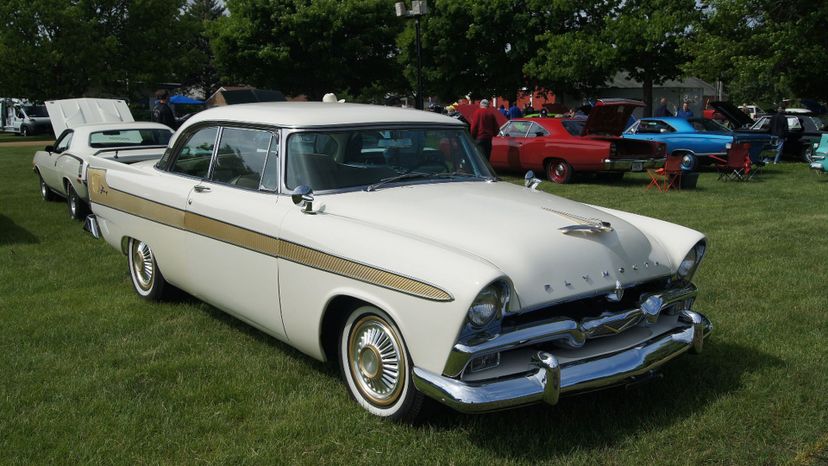
Plymouth produced the full-size Fury between 1958 and 1989. A red and white '58 convertible Fury also starred as the title "character" in Stephen King's classic horror novel "Christine."
Advertisement
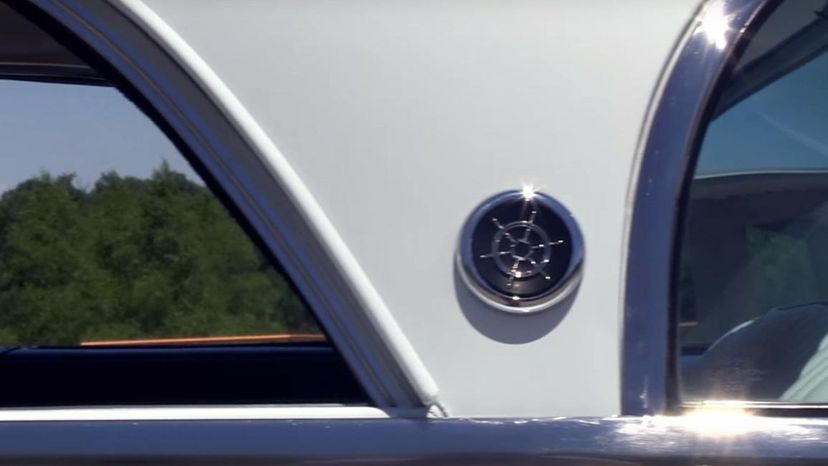
In keeping with the car's nautical inspirations -- it was named for clipper sailing ships -- the Packard Clipper used a ship's wheel as its logo. In the '50s, this logo was often built into the car's prominent front grille.
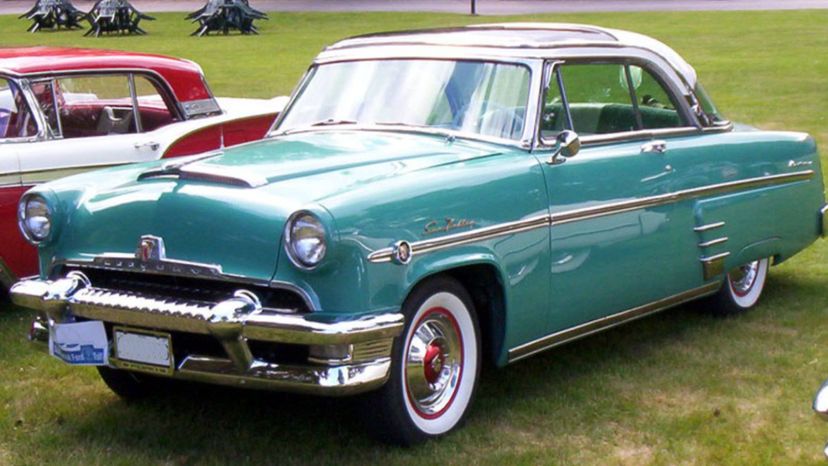
The Mercury Sun Valley came with classic '50s futuristic design. It included a roof built from see-through plastic. Heat buildup through the roof made the car rather unpopular, so only around 10,000 were made before the model was discontinued.

At the start of the '50s, Oldsmobile briefly rebranded its Oldsmobile 76 as the Futuramic 76. This "club coupe" offered a sporty take on the traditional sedan, and came with a low price point that made the car popular with buyers.
Advertisement
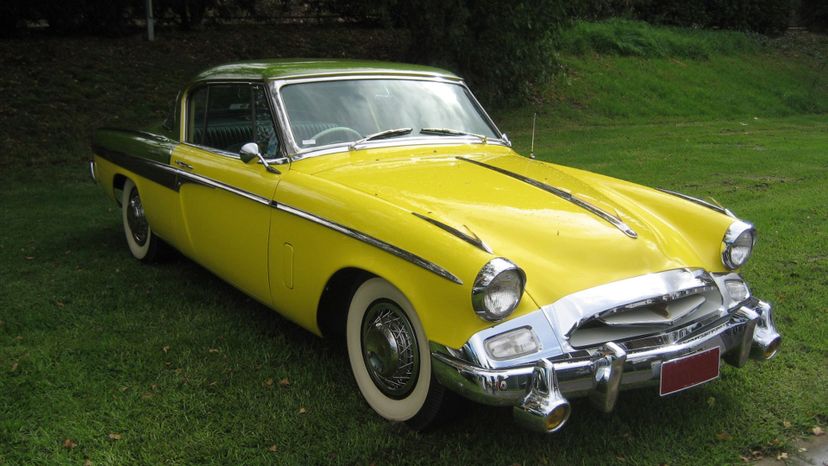
Studebaker produced the Starliner mid-size, sometimes called the Low Boy, from 1953 to 1956. A two-door coupe version of the car was sold as the Starlight, while the hardtop was the Starliner. In 1955, some Starliner models got an innovative wraparound rear window, which drew its inspiration from the world of aviation.

The Firedome was the top-of-the-line full-size model produced by Chrysler's DeSoto wing from 1953 through 1954. With the introduction of the Firelite in 1955, the Firedome was reduced to a more mid-range model.
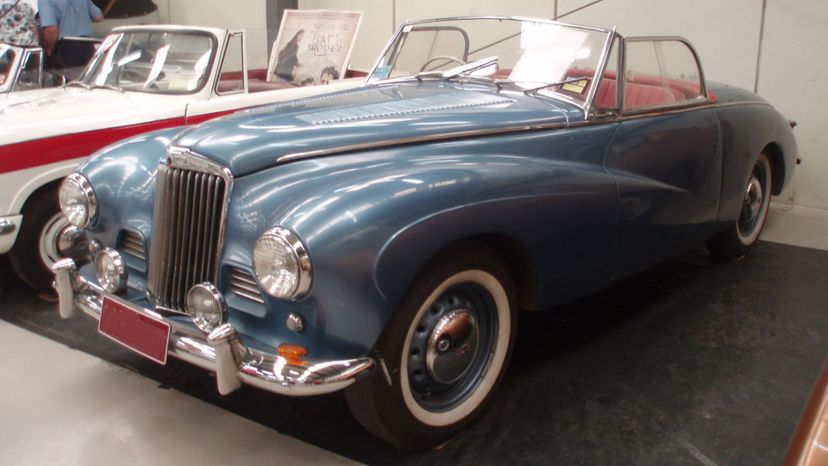
Made by the Rootes Group of England, the Sunbeam Alpine appeared in the movie "To Catch a Thief." This '50s sports car was truly built for speed, with no side windows or external door handles.
Advertisement
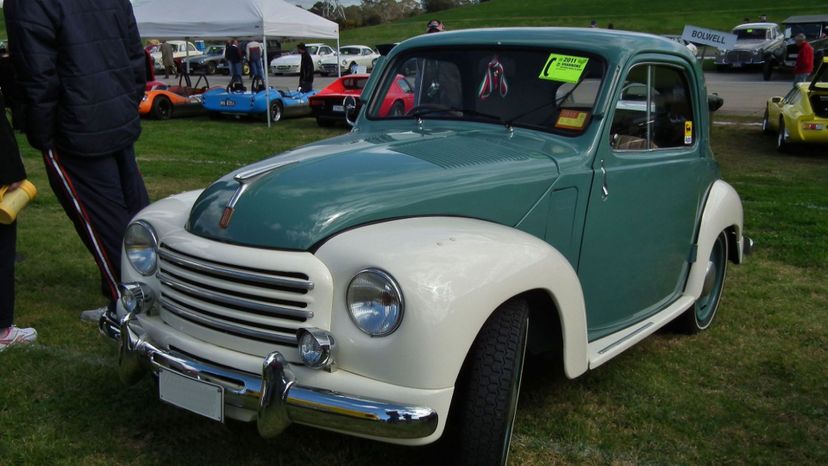
Buyers flocked to the Italian-made Fiat 500 when it was introduced in 1957. Affordable and compact,. the 500 cc vehicle was a big seller in the U.S. Those who wanted a bit more power -- and a cool two-tone paint job -- could splurge on the Nuova Sport version, which was offered from 1958 to 1960.
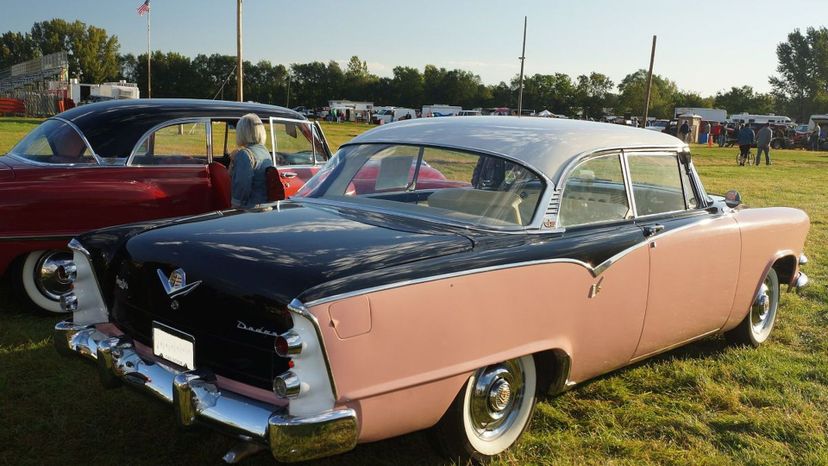
In 1955, Dodge upgraded the full-size Coronet with the introduction of the hardtop Coronet Lancer. The Lancer also came with a padded dashboard, power windows and brakes, and plenty of shiny chrome.

The luxurious Rolls-Royce Silver Cloud got even fancier with the second-generation redesign in 1959. The new version came with standard power steering, electric windows and the option for buyers to choose a V8 engine.
Advertisement
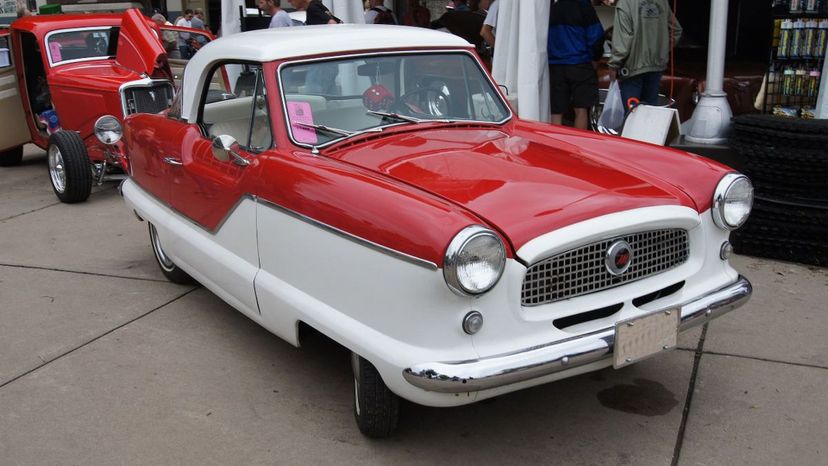
It's hard to imagine a car smaller than a Beetle, but the AMC Metropolitan managed to be slightly shorter than this classic VW. this zippy car was so popular that AMC sold more than 20,000 units in 1959 alone.
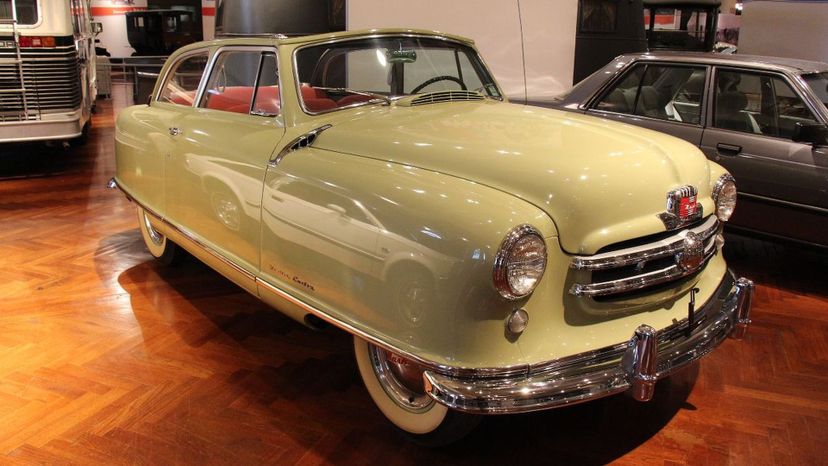
The Nash Rambler was a popular family car in the early '50s. It lost the Nash label when the company merged with Hudson in 1954 to form AMC.

Since the '80s, the Chrysler Town and Country has taken the form of a minivan. In the '50s, however, it was a family station wagon. Models built before 1951 are known as Woodies because of the wooden framing and inlays used on the body.
Advertisement
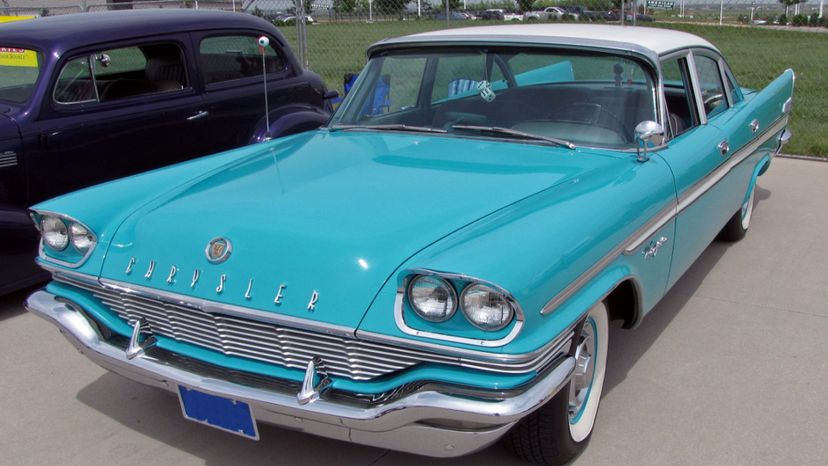
Chrysler produced the New Yorker for over half a century, and the car went through some major changes over the years. In 1958, the company added an option called Auto-Pilot -- a form of cruise control.
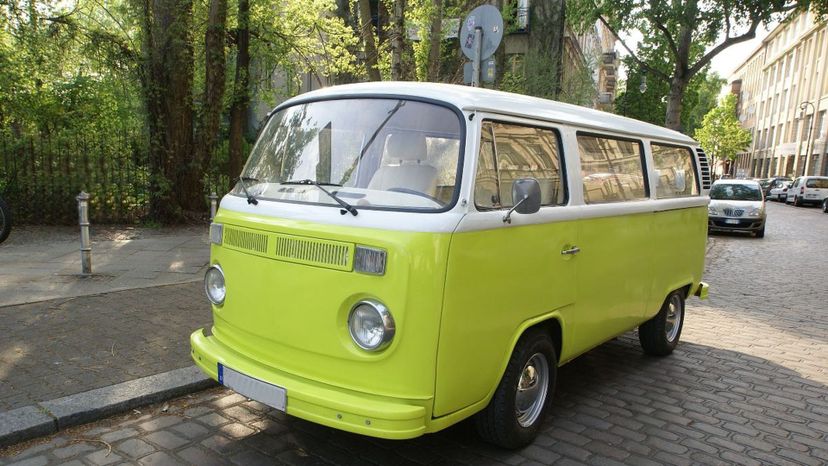
VW started producing its iconic bus -- or Type 2 -- in 1950. All models built through 1967 had a split windshield, while later models came with a one-piece windshield without a center mullion.
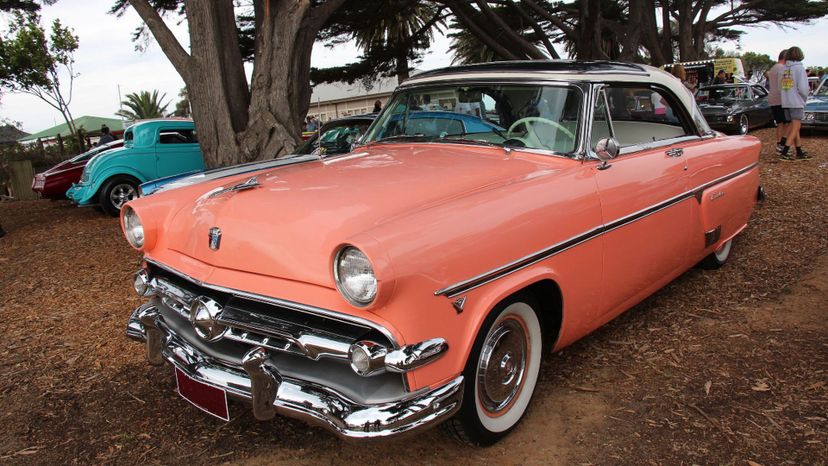
Like the Mercury Sun Valley, the Ford Crestline Skyliner came with a plastic see-through roof. The company sold 13,000 units in 1954 alone to buyers who wanted to let the sun shine in.
Advertisement
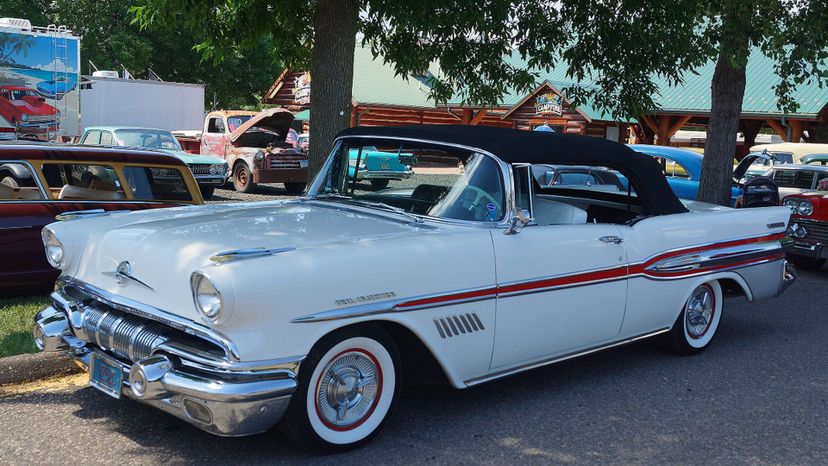
Produced between 1957 and 2005, the Pontiac Bonneville was a luxury version of the Pontiac Star Chief. Named for the Bonneville Salt Flats of Utah, the vehicle served as the Indy Pace Car for 1958.